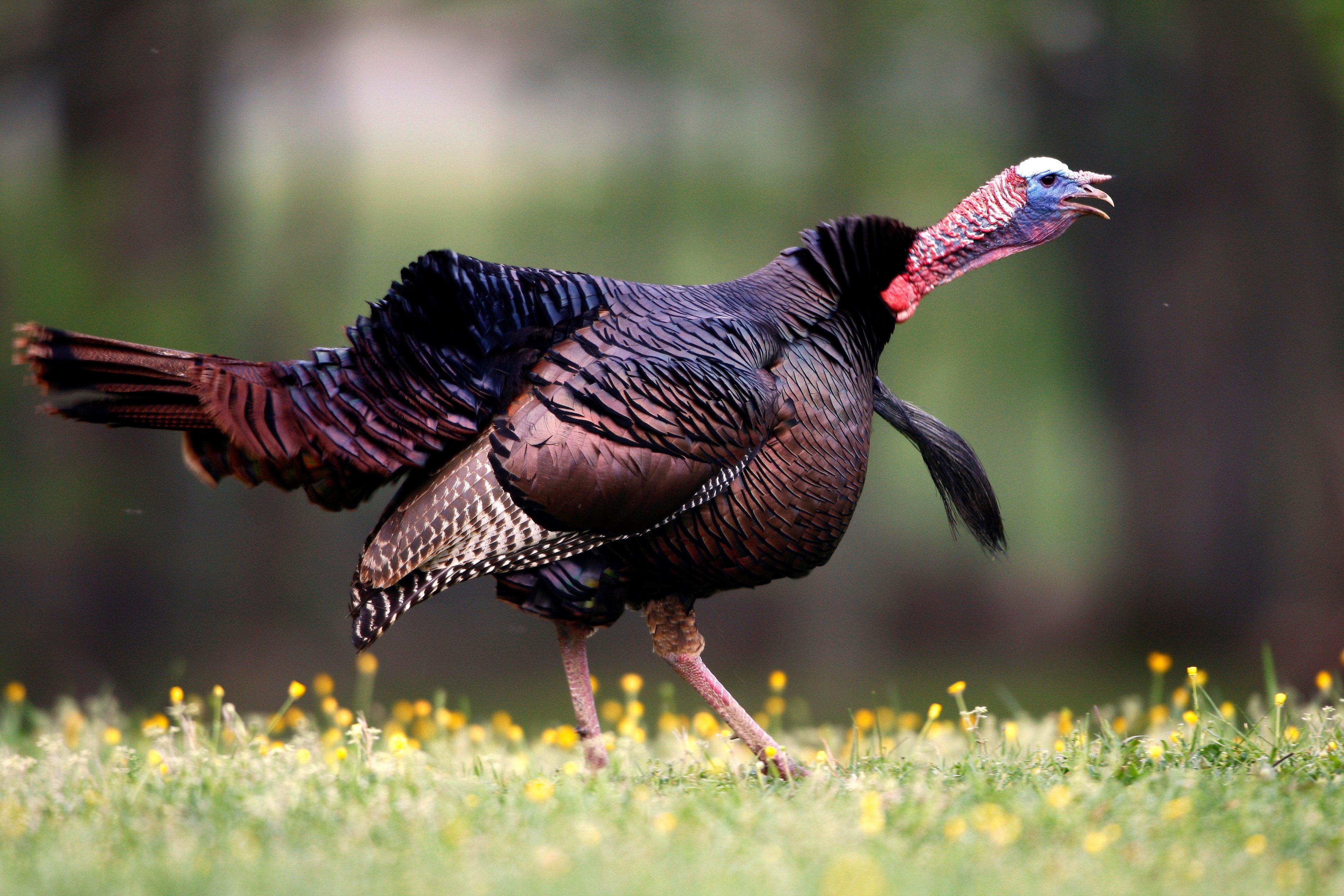Many hunters can make a bird hammer, but few know what that response really means. Decipher those gobbles this spring to tag more longbeards
The gobbling of a wild turkey is the most electrifying sound you’ll hear in the spring woods, but not all gobbles are created equal. Here are seven scenarios and what I interpret them to mean. When you break the gobbling code, you’ll hunt better this season.

A wild turkey’s gobble can mean many things depending on intensity, timing, context, and more. Image by Images on the Wildside
Three Tree Gobbles
When a turkey gobbles on the roost in the pre-dawn and then flies down and shuts up, you can bet he has hens nearby. This is a hard bird to kill. But sit tight and call. If hens start yelping back, call back and mock them. It’s a long shot, but the girls might come in and drag the gobbler with them.
Conversely, a turkey that gobbles hard in the tree and then flies down and hammers some more is alone and hot. Sit tight, call, and be ready. No guarantees, but this is a bird that might come in fast. Last, don’t be fooled by a turkey that sits in a roost tree and gobbles hard for 20 minutes or more after fly-down time. It’s a jake.
Courtesy Gobble
You yelp and a turkey gobbles 100 to 200 yards away. You get pumped and call again, and again. Silence. Your first calls shocked that bird into a courtesy gobble. There’s a good chance he’s strutting out there with several real hens, and he doesn’t have to gobble at you anymore. Try this. Move 50 to 75 yards closer to the gobble you got and call again. Sometimes, if you close the gap and tighten up, a turkey will gobble again. But if he keeps quiet and you have more spots to hunt, leave him to his gals, and go look for a more responsive bird.
Cut-Off Gobble
You yelp, and a tom thunders. Make another call immediately. If he cuts you off with another booming gobble, find a tree, sit down, and get your gun up. Give him one more shot of the calling he likes. That turkey is hot and does not have hens. There’s a darn good chance he’s coming.
Planted Gobble
Every time you call, a turkey gobbles from the same spot, as if his big feet are planted to the ground. Maybe there’s a ditch, creek or other obstacle between you and the bird, and he doesn’t want to fly it. Or, he’s hanging in one spot and strutting with hens. Sneak closer, and if you see a creek or fence. Cross it if you can. Tighten the gap, sit and call a while, and see what happens.
Walking Gobble
After 20 minutes or so, a planted tom starts walking away from you, his gobbles growing fainter by the minute. Maybe a hen has gotten sick of your yelping and is dragging him away. Or the turkey got bored and is heading for another strut zone to find a hen. Either way, you have zero chance of turning that bird around with more calling. Your only shot is to get up and go. Move fast, and try to get in front of the walking turkey before you call again.
Where-You-At Gobble
You’ve been sitting in quiet woods and blind calling for a half-hour or so, and haven’t heard a gobble all morning. Before you throw in the towel, keep quiet for 10 minutes. Then, toss out one last run of loud, aggressive yelps and cutting to break the silence. Once in a blue moon, a turkey will boom a gobble close and make you jump. He’s been sneaking in quietly, and that one gobble is asking, “Where you at, hen?” Point your shotgun in that direction, but don’t call again. A crinkly white head is apt to pop up in the greenery at any minute.
Don’t Miss: THE BEST 20-GAUGE TURKEY LOADS OF 2024












